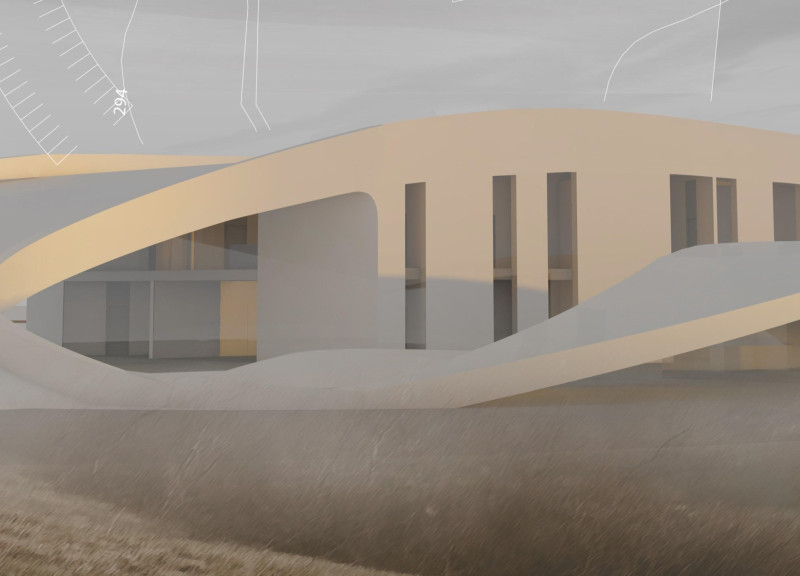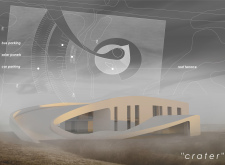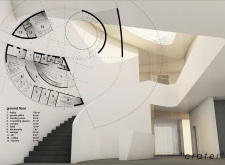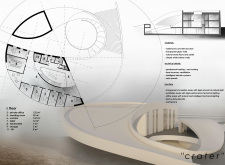5 key facts about this project
The "Crater" project is located in a vibrant urban setting, designed to meet the needs of the community through its multifunctional spaces. It aims to create a welcoming environment for both public interaction and individual work. The layout emphasizes accessibility and sustainability. Key components, such as parking areas and solar panels, demonstrate a thoughtful approach to integrating energy efficiency into everyday life.
Site Features
The project includes important features like bus and car parking facilities, making it easy for people to reach the building. The solar panels reflect a commitment to renewable energy, aligning with modern principles of environmental responsibility. The arrangement of these elements shows careful consideration of how the site fits within its surroundings.
Spatial Organization
The layout is structured to support easy movement and a variety of activities. The basement contains an entrance, pathways for public and office circulation, a multipurpose exhibition hall, offices, a café with a kitchen, and an information center. This organization encourages diverse programming and invites community engagement, allowing different types of gatherings and events.
Materiality and Aesthetics
The construction relies on a reinforced concrete framework, ensuring strength and stability. Transparent glass walls are used to invite natural light into the spaces, enhancing the indoor atmosphere. The use of natural stone floors and ashlar provides a strong visual element. Simple white interior walls create a clean environment, allowing for flexibility in how spaces are used and decorated.
Technical Innovations
The building incorporates various technical systems aimed at sustainability. Geothermal heating and cooling, along with heat recovery ventilation, contribute to energy efficiency. Intelligent electric systems further reduce energy consumption. Coupled with solar panels, these installations enhance the building’s performance and reduce its impact on the environment.
A roof terrace adds another layer of functionality, providing outdoor space for relaxation and socializing, effectively connecting users with green areas within the urban landscape.






















































